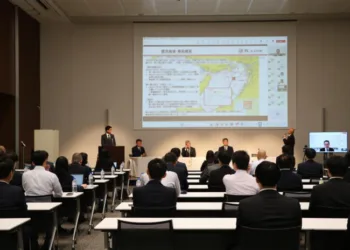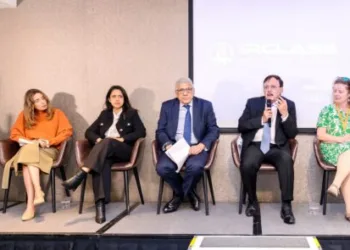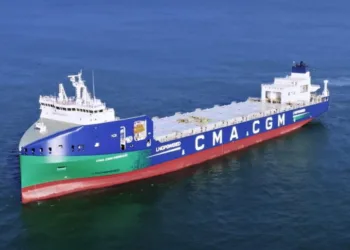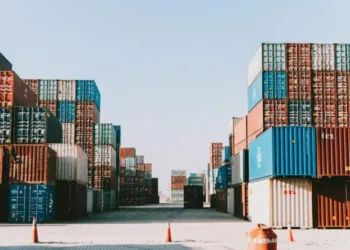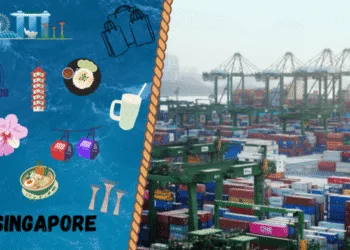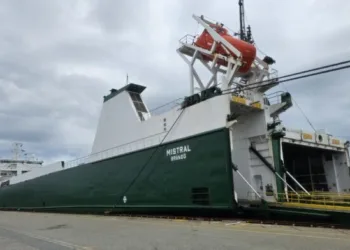As pre-trial motions grind forward in the sprawling litigation over the March 26, 2024, allision of the containership Dali with the Francis Scott Key Bridge—an impact that brought down the span, killed six construction workers and froze port traffic—the vessel’s owner and manager have launched a new front in court.
In a product liability lawsuit filed July 31 in the US District Court for the Eastern District of Pennsylvania, Grace Ocean, the Dali’s owner and Synergy Marine, its manager, allege that South Korea’s HD Hyundai Heavy Industries defectively designed, manufactured and installed the critical switchboard aboard Dali, specifically pointing to wiring and terminal block flaws that they say caused an electrical blackout that cascaded into the catastrophe.
The complaint zeroes in on the under-voltage release (UVR) control circuit for a circuit breaker, asserting that one of the control signal wires was not securely seated in its spring-clamp terminal block due to a design/installation defect: the labelling band was placed too close to the ferrule, preventing full insertion and reliable contact, creating an open circuit and depriving the UVR coil of control voltage. That, the plaintiffs contend, triggered the breaker trip and the subsequent 440V blackout that left the ship without propulsion or steering as it approached the bridge.
Investigators from the National Transportation Safety Board (NTSB), the US Coast Guard and other agencies had early on focused on the vessel’s electrical system as the linchpin of the chain of failures. By June 2024, the NTSB’s investigative update confirmed “an interruption in the control circuit” linked to main breakers, and subsequent documentation surfaced details about a loosely connected cable and how HD Hyundai engineers themselves acknowledged that such a condition could create an open circuit, triggering an under-voltage release trip and causing a blackout—the very scenario later replicated in controlled tests.
The Dali had a documented history of power issues. The NTSB’s preliminary report detailed prior electrical blackouts, including one during in-port maintenance the day before departure from Baltimore, and subsequent unexpected breaker trips after departure that degraded redundancy and left the ship vulnerable. The investigative narrative also highlighted concerns over vessel maintenance, ad hoc repairs and questions about overall seaworthiness—matters that have been fulcrums in other lawsuits and government claims.
The legal landscape surrounding the collapse has become increasingly complex. Federal prosecutors with the US Department of Justice in September 2024 filed a roughly $100m suit against Grace Ocean and Synergy, accusing them of sending an unseaworthy vessel into US waters despite known and unresolved mechanical and electrical problems, and of failing to report issues as required.
Maryland state authorities have separately sued the ship’s owners and managers, seeking damages tied to the bridge collapse, cleanup and reconstruction, alleging they ignored recurring defects and failed to maintain the vessel properly.
Meanwhile, Grace Ocean and Synergy Marine have been pursuing their own limitation-of-liability strategy, seeking to cap exposure while deflecting blame in part toward state actors and the shipbuilder—a posture outlined in earlier filings and public reporting about the evolving liability case.
HD Hyundai has been served and is expected to respond in due course.




